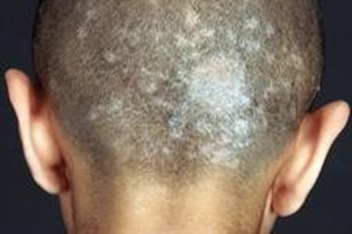The mother of a toddler yells to the nurse." Help! He is choking to death on his food." The nurse determines that lifesaving measures are necessary based on which of the following?
Coughing
inability to speak
Gagging
Pulse of 100 beats per minute
The Correct Answer is B
A. Coughing indicates a normal protective mechanism when the toddler is attempting to dislodge and cough out the food.
B. Inability to speak is a significant sign of choking and indicates that the airway is nearly completely obstructed.
C. Gagging shows that the toddler is partially obstructed and still attempting to dislodge the food
D. Pulse of 100 Beats per minute is not a direct indicator of choking.
Nursing Test Bank
Naxlex Comprehensive Predictor Exams
Related Questions
Correct Answer is D
Explanation
A. Pediculosis capitis, commonly known as head lice, is characterized by the presence of live lice and nits (lice eggs) attached to the hair shaft close to the scalp. They do not typically cause a rash on the back of the neck.
B. Impetigo is a bacterial skin infection characterized by red sores or blisters that rupture and form honey-colored crusts. It commonly affects areas of the body with broken skin, such as the face, hands, and arms.
C. Folliculitis is inflammation or infection of the hair follicles caused by bacteria or fungi. It can result in red, swollen, and pus-filled bumps around hair follicles.
D. Tinea capitis is a fungal infection of the scalp and hair follicles. It is characterized by the presence of white or grayish flakes that adhere to the hair shafts and cannot be easily brushed off, along with a rash or scaly patch on the scalp. The rash may extend to the back of the neck.

Correct Answer is A
Explanation
Children with CF often have pancreatic insufficiency, leading to malabsorption of nutrients. Pancreatic enzymes help digest fats, proteins, and carbohydrates, allowing for better absorption of nutrients from food.
B. This response is not specifically related to the nutritional management of CF. While individuals with CF may have increased salt loss through sweat and may need to consume more salt to maintain electrolyte balance, restricting salt is not typically part of CF nutrition management.
C. Hydration is important for individuals with CF to help maintain normal mucus consistency and prevent dehydration, especially during times of increased respiratory secretions.
D. Children with CF often have increased energy needs due to the increased work of breathing and malabsorption of nutrients. Therefore, it is important to provide a diet that is high in calories and nutrient-dense.
Whether you are a student looking to ace your exams or a practicing nurse seeking to enhance your expertise , our nursing education contents will empower you with the confidence and competence to make a difference in the lives of patients and become a respected leader in the healthcare field.
Visit Naxlex, invest in your future and unlock endless possibilities with our unparalleled nursing education contents today
Report Wrong Answer on the Current Question
Do you disagree with the answer? If yes, what is your expected answer? Explain.
Kindly be descriptive with the issue you are facing.
